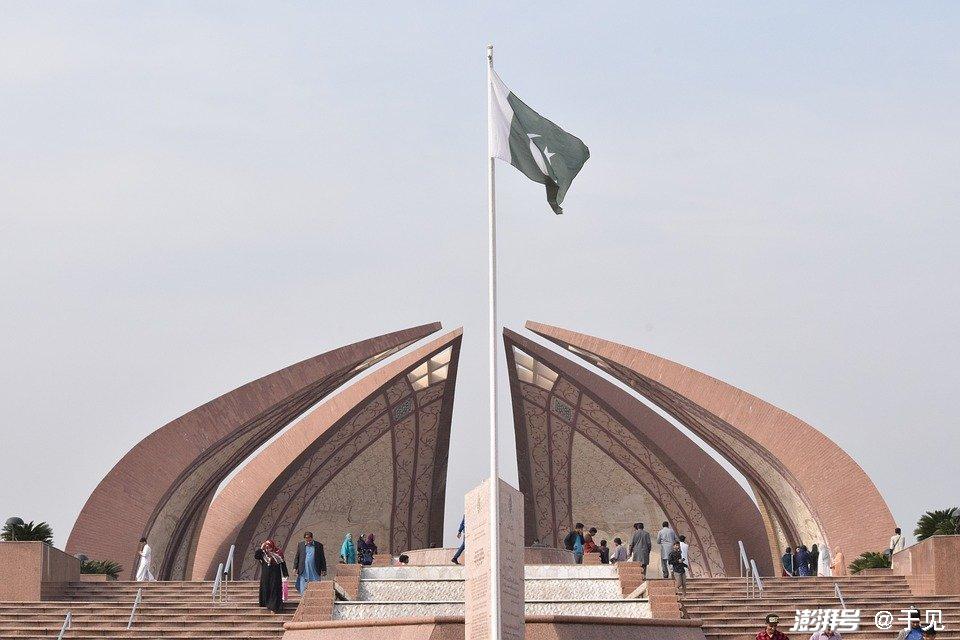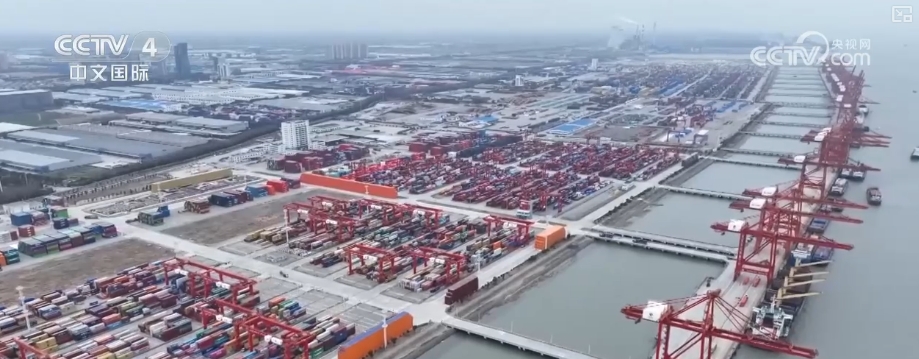The “One Belt, One Road” Religious And Cultural Pattern And Its Important Position In People-to-people Connectivity
The “One Belt, One Road” Religious And Cultural Pattern And Its Important Position In People-to-people Connectivity
As an important force in modern global civilization exchanges, the religious and cultural pattern of the “Belt and Road” has an important impact on the people-to-people connectivity in the construction of the “Belt and Road”. It should attract the attention of all parties and try to promote the advantages and eliminate the disadvantages as much as possible.
Zhonghong.com, Beijing, August 15. On August 15, focusing on the theme of "Discuss, Build and Share - Review of the 10th Anniversary of the 'Belt and Road' and High-Quality Development", the 40th online seminar of the Zhonghong Forum was successfully held. Li Lian, Dean of the Xuanzang Research Institute of Northwest University, was invited to attend the forum and deliver a keynote speech.
The following is Li Lian’s speech:
The Silk Road in history was not just a trade road mainly focused on silk trade, but a road of civilizational exchanges that integrated multiple historical connotations such as a trade road, a diplomatic road, a missionary road, a military road, a roaming road, and a national migration road. Today’s “Belt and Road” is not only an expansion belt of economic cooperation, but also a political exchange belt of special significance, a unique distribution belt of geological minerals and ecological environment, and a civilizational exchange belt where many important ethnic groups are intertwined, multiple important religions are intertwined, and different ancient and modern civilizations have ever-changing forms. The dominant factor in this kind of civilizational exchange is still the religion that has lasted for thousands of years along the “Belt and Road”. As an important force in modern global civilization exchanges, the religious and cultural pattern of the "Belt and Road" has an important impact on the people-to-people connectivity in the construction of the "Belt and Road". It should attract the attention of all parties and try to promote the advantages and eliminate the disadvantages as much as possible to provide the support of cultural identity and the link of spiritual connection for the construction of the "Belt and Road".
1. The basic situation of the religious and cultural pattern of the “Belt and Road Initiative”
The overall pattern of the spatial distribution of religious culture along the “One Belt, One Road” initiative was formed historically. From the perspective of the Silk Road economic belt, the distribution of religions mainly presents a pattern of four distribution areas juxtaposed from east to west, that is, it can be divided into four religious distribution areas from east to west:
The first is an area where multiple religions coexist. This religious distribution area is located at the eastern end of the Silk Road Economic Belt. It is an area in mainland China dominated by Han people, such as Shaanxi, Henan, Sichuan, Gansu and other places. In this area, Confucianism, Buddhism, and Taoism are the main culture. Buddhism and Taoism coexist with the five major religions of Islam, Catholicism, and Christianity. Except for the relative concentration of a certain religion in individual small spaces, there is basically no spatial separation between the various religions in this area. Different religions coexist in a mixed manner, depend on each other at close range, and have intensive relationships with each other. The opportunities for conflicts increase, and potential conflicts have always existed. However, at the same time, there is more friction between each other because there is no space to block mutual exchanges. Various active and passive dialogues have become more popular and in-depth with the evolution of time. The relationship between religions has shown a peaceful and friendly atmosphere with the progress of modern civilization.
The second is a multi-religious area of interdependence. This religious distribution area mainly covers Xinjiang, Qinghai, Inner Mongolia, Tibet, and parts of Sichuan, Gansu, Ningxia and other provinces and regions in western China. In this geographical area, there are three religious and cultural areas, namely the religious and cultural area dominated by Islam, the religious and cultural area dominated by Tibetan Buddhism, and the mixed coexistence of five major religions, mainly Confucianism, Taoism and Buddhism. These three religious and cultural areas are intertwined and interdependent, but they have obvious personalities and a certain degree of spatial segmentation. Religious issues in different cultural areas have strong individual characteristics, and there is a certain gap between them. There is a lack of universal and in-depth mutual exchanges. When different cultural areas border each other, especially in areas where they intersect with each other, religious issues are intensively intertwined, and sometimes the problems are quite complex. Xinjiang within this religious distribution area is, on the one hand, connected with the Islamic cultural areas in Central Asia, the Middle East and parts of South Asia, showing the cross-border distribution of religious and cultural areas; on the other hand, due to the existence of national borders and the strict control of the Chinese government, it forms an interdependent overall religious spatial pattern with other religious and cultural areas in the country. The Tibetan Buddhist cultural area within this religious and cultural area also has the characteristics of cross-border existence, because from the perspective of cultural characteristics, Tibetan Buddhism here is connected with Tibetan Buddhism in the Mongolian People's Republic, Bhutan, Nepal and parts of Russia. In the process of deepening the Sinicization of religion, the bonds of communication between the three major religious and cultural areas are becoming increasingly stronger, and the cultural differences caused by spatial division are shrinking.
The third is a region dominated by Islam. This religious distribution area is mainly in Central Asia, West Asia, parts of southern Eastern Europe, North Africa and other places. From a macro perspective, it belongs to the Islamic cultural area, although other religions such as Judaism, Christianity, Baha'i, and Yazidis also exist in this area. Therefore, the religious distribution in this region includes not only the spatial confrontation and interweaving of Islamic sects, but also the spatial persistence and confrontation of other religions. The imbalance of religious relations caused by the dominance of one religion and other social problems related to religion have intensified the tension between different ethnic groups, and also promoted profound changes in politics, economy and other fields. The religious distribution area and the resulting ethnic relations, national relations, as well as the economic relations and the game between great powers behind it all show the strong personality of this religious distribution area.
Fourth, the region is dominated by Christianity. This religious distribution area is the entire European region. This is a traditional Christian cultural area, which can be further subdivided into the Catholic cultural area in southern Europe, the Orthodox cultural area in eastern Europe, and the Protestant cultural area in northern Europe. In modern times, especially after World War II and especially since the end of the Cold War, other religions such as Islam have also rapidly entered the country, and religious relations have become increasingly complex. But generally speaking, due to the developed economy, strict rule of law, cultural openness, especially the prevalence of modern concepts such as freedom of belief, religious equality, separation of church and state, and the relatively complete modern transformation of Christianity in this region, religious issues are relatively mild, and the impact of religion on politics, economy, and social life is far less serious than in other religious areas.
From the perspective of the 21st Century Maritime Silk Road, the distribution of religions is in a pattern of five distribution areas juxtaposed from east to west along the Western Pacific and North Indian Ocean. That is, it can be divided into five religious distribution areas from east to west:
The first is an area where multiple religions coexist. This religious distribution area and the multi-religious coexistence area at the eastern end of the Silk Road Economic Belt are the same religious distribution area as a whole, that is, mainland China or what can be called the central and northern region of the Western Pacific. Its characteristics are as mentioned above, that is, the coexistence of five major religions, Confucianism, Buddhism and Taoism.
The second is the separation of multi-religious regions. This religious distribution area is around the South China Sea or can also be called the central area of the Western Pacific. This religious distribution area clearly shows the division and mutual echo of three religious and cultural areas: first, the mainland area of Southeast Asia, where Buddhism plays an absolute dominant role; second, the southern area of maritime Southeast Asia, where Islam plays an absolute dominant role; and third, the northern area of maritime Southeast Asia, where Catholicism plays an absolute dominant role. These three areas are located around the South China Sea and are highly spatially segmented, but they are close to each other and some areas are dependent on each other. Religious conflicts are more obvious in the areas bordering the three regions. For example, the area between the north and south of maritime Southeast Asia used to be an area where the Abu Sayyaf armed organization, a religious extremist organization, engaged in violent terrorist activities; conflicts also occurred in the border area between the Buddhist cultural zone and the Islamic cultural zone in southern Southeast Asia on the mainland. ; The conflict between the Buddhist cultural zone in western Myanmar and the Islamic cultural zone in South Asia and Bangladesh has also been very intense in recent years. Some areas in Yunnan, China, show the blending of the three major Buddhist cultural zones: Theravada Buddhism, Chinese Buddhism, and Tibetan Buddhism. Of course, this is only a personalized manifestation of the Buddhist cultural zone. Generally speaking, dialogue and exchanges between the three religious and cultural zones around the South China Sea are quite difficult. However, within the three religious and cultural zones, because a single religion is dominant, disputes between religions are not prominent and the situation is relatively stable.
The third is the area of interdependence and confrontation between the two major religious spaces. This religious distribution area is South Asia, or the central North Indian Ocean region. There are two major religions here, one is Hinduism and the other is Islam. There are also Sikhism, Jainism, Baha'i, Christianity and Buddhism, which is mainly in Sri Lanka and is slowly reviving in India and Nepal. Each religion is divided in space, thus forming a geographical pattern dominated by a certain religion. At the same time, each religion is spatially intertwined and interdependent, thus forming coexistence and direct intersection with each other. In terms of spatial layout, it is very different from the surrounding areas of the South China Sea. In addition to the characteristics of spatial interdependence, coupled with the diversity of religious types, the increasing politicization of religion, and the tension in India-Pakistan relations, the impact of religious issues is far more serious than in the areas surrounding the South China Sea. The most difficult religious relationship is the millennium grudge between Hinduism and Islam. Especially with the rapid increase in the Muslim population in India, the impact of religious relations is expanding from India-Pakistan relations to more complex social fields.
The fourth is a region dominated by Islam. This religious distribution area is the western region of the North Indian Ocean and the eastern and southern shores of the Mediterranean. It is a religious distribution area as a whole with the single-religion-dominated Islamic region on the Silk Road Economic Belt mentioned above, and its characteristics are also as mentioned above.
Fifth, the region is dominated by Christianity. This religious distribution area is the area on the northern shore of the Mediterranean Sea and the east coast of the North Atlantic Ocean. It is an integral religious distribution area with the single-religion-dominated area of Christianity along the Silk Road Economic Belt mentioned above, and its characteristics are also as mentioned above.
2. Basic characteristics of the religious and cultural pattern of the “Belt and Road Initiative”
Observing related issues such as religious distribution, religious relations and religious influence in the "One Belt and One Road" can be carried out from different angles. Among them, spatial pattern is an observation angle that has been relatively ignored in the past. Different spatial patterns of religious distribution lead to different religious relationships. The relationship between religion and social fields such as politics and economy is even more different, and the nature and impact of religious issues are also different. At the same time, different religious distribution spaces are often combined with different political, economic, and cultural spaces. Therefore, the so-called spatial pattern of religious distribution is not essentially a purely religious issue. Observing social issues related to religion with the help of spatial patterns can allow us to see more clearly the characteristics of religious distribution along the Belt and Road Initiative, thereby discovering some religious characteristics and religious issues that are significant to geographical units, and looking for different solutions to religious issues in different geographical units.
1. There are important differences in the multi-religious exchanges in different religious distribution areas along the “Belt and Road”. Looking at the 21st Century Maritime Silk Road, the characteristics of mainland China's religious culture are the mutual peace and friendly exchanges between multiple religions under the background of strong government control, and the relative dilution of potential problems. Southeast Asia is an area bordered by multiple religious plates. There are obvious conflicts and the separation of beliefs between multiple religions. In addition to the obvious conflicts in the border areas of multi-religious plates and the sharp separation of beliefs among multiple religions in South Asia, there are also fierce civil confrontations and strong political intervention due to the dominance of one religion and the spatial dependence of different religious distribution areas. The Middle East is dominated by one religion. On the one hand, there are fierce factional conflicts within one religion. On the other hand, there are also strong conflicts between Islam and Judaism, Christianity, Yezidis, Baha'i and other religions. Due to the success of the modern transformation of the single-dominated multi-religious religions in Europe, a form of communication supported by modern civilization has emerged. Friendly dialogue and peaceful coexistence have become the mainstream of communication. Here, religious risks are relatively small.
2. The exchanges and religious influences between different religious areas along the “Belt and Road” are strongly affected by regional personalities. In the two religious distribution areas located at the east and west ends, namely, the religions in mainland China and Europe, external religious exchanges and the social influence of religion are carried out under the modern civilization system of separation of politics and religion. The relationship between religious exchanges and the relationship between religion and society are relatively stable. Conflicts in individual areas can also be effectively controlled at certain times. Religion is often difficult to transcend politics or exert a restrictive influence on politics. In other religious areas, religious interactions and influences have a strong imprint of religious sanctity and need to be dealt with with caution.
3. The areas bordering different religious areas along the “One Belt, One Road” are places where religious relations are tense, and even present an obvious zone of religious conflict. Such as the western part of Myanmar, the southern part of Thailand, the southern part of the Philippines, the northern part of Sri Lanka in the past, the area between India and Pakistan, especially the Kashmir area, the area between Palestine and Israel, the southern part of Russia, the Balkan Peninsula, the northern part of Ireland, etc.
4. The pluralistic coexistence of religions weakens from east to west. From a religious distribution area where diverse coexistences occur, to a diverse and separated religious distribution area (the 21st Century Maritime Silk Road has two types of pluralistic segmentation: the religious and cultural area around the South China Sea with strong spatial segmentation and strong diversity, and the South Asian region with weak spatial segmentation and weak diversity. India in South Asia is a region where one religion dominates, and religious diversity and spatial segmentation are highly interdependent), to a religious and cultural area where one religion dominates. The coexistence of religious pluralism in China is the coexistence of multiple religions that are evenly matched and share the same space. It is the most complete religious pluralism, and therefore has its own serious problems.
5. The complexity and influence of religious issues are high in the middle and low at the two ends. Religious issues in Central and Southeast Asia are serious and have profound influence. In Europe and China, secularization, especially the separation of church and state, is relatively in place, but religious issues and their influence are relatively weak.
The spatial pattern of religious distribution along the Belt and Road has an important impact on the construction of the Belt and Road. In addition to the strong presence of religion on the Belt and Road and its profound connection with politics, economy, especially same-ethnic relations, social stability, and international exchanges, the spatial pattern of religious distribution will also become an important influencing factor. In other words, this spatial pattern will be deeply involved in the process of religion's influence on other social fields, and even determine the nature, extent, and direction of this influence. At the same time, due to the different spatial patterns of religious distribution along the Belt and Road, the religious influence of different religious distribution areas also has its own characteristics, and the situation is sometimes very complicated. We hope to attract the attention of relevant parties and accurately grasp the religious landscape in the process of carrying out relevant work. We will not only strive to eliminate some potential negative impacts of religious issues, but also strive to use friendly exchanges between religions and cultures to provide spiritual support for people-to-people bonds for the construction of the "Belt and Road". Therefore, the economic, trade and political exchanges between China and the West are less affected by religion, while the political and economic exchanges between China and South Asian and Middle Eastern countries must consider religious factors.
3. The status of the religious and cultural pattern of the “One Belt and One Road” in terms of people-to-people connectivity
The spatial pattern of religious distribution along the Belt and Road has an important impact on the construction of the Belt and Road. In addition to the strong presence of religion on the Belt and Road and its profound connection with politics, economy, especially same-ethnic relations, social stability, and international exchanges, the spatial pattern of religious distribution will also become an important influencing factor. In other words, this spatial pattern will be deeply involved in the process of religion's influence on other social fields, and even determine the nature, extent, and direction of this influence. At the same time, due to the different spatial patterns of religious distribution along the Belt and Road, the religious influence of different religious distribution areas also has its own characteristics, and the situation is sometimes very complicated. We hope to attract the attention of relevant parties and accurately grasp the religious landscape in the process of carrying out relevant work. We will not only strive to eliminate some potential negative impacts of religious issues, but also strive to use friendly exchanges between religions and cultures to provide spiritual support for people-to-people bonds for the construction of the "Belt and Road".
People's hearts are a collective spiritual activity. Its basic structure and motivational mechanism are extremely complex. They are affected by various external factors such as national interests, national traditions, personal identities, etc., and are also restricted by various internal factors such as values, cognitive methods, and individual personality. Among them, religious affiliation and belief psychology are one of the core factors. Therefore, to grasp the people's hearts and minds of the countries along the "Belt and Road" and build a bond of people-to-people bonds, it is natural to grasp the basic structure of the religious and cultural areas along the "Belt and Road", to be familiar with relevant religious knowledge, to understand religious doctrines, and to respect religious beliefs. This is the basic prerequisite for people-to-people bonds.
Since the distribution of religious culture along the "Belt and Road" presents an overall pattern of mutual separation and interdependence in different spaces, the issue of people's hearts and minds is deeply affected by the spatial pattern of religious culture. Therefore, connecting people's hearts and minds among different religious and cultural areas will naturally face different challenges and need to be faced in different ways.
If we only look at religious beliefs or extend to the entire cultural field, the regions where it is easiest to find bonds of people-to-people bonds are Northeast Asia, followed by Southeast Asia, then South Asia, and possibly Central Asia and Europe. Although due to the influence of social factors such as international politics, economics and trade, people-to-people bonds in the construction of the “One Belt, One Road” may be more complicated, but we can at least recognize the potential advantages and serious challenges of cultural exchanges.
In those religious and cultural areas where one religion dominates, they should also make full use of the ties that this religion can provide on the basis of understanding their main religion, and while striving to build this exchange bond, they should minimize the negative impact that this religion may bring in transnational exchanges. For example, in the construction of the China-Pakistan Economic Corridor, Islam can provide a bond of people-to-people bonds and the hidden risks.
At the same time, because of the different religious relations in different religious and cultural areas, there are often different types of religious or sectarian conflicts, such as the conflict between Islam and Judaism behind the Palestinian-Israeli conflict in the Middle East, the conflict between Shia and Sunni behind the Saudi-Iranian relationship, the conflict between Orthodox Christianity and Islam in the Caucasus, the conflict between Islam and Hinduism behind the India-Pakistan conflict in South Asia, and the conflict between Buddhism and Islam in western Myanmar and southern Thailand in Southeast Asia. We must carefully observe and deeply understand the pattern of this religious relationship and take advantage of the situation. At the same time, we must avoid falling into the contradictions and struggles of this religious relationship.
In short, we should clearly observe the religious and cultural pattern of the "Belt and Road", understand the existence of religions in different religious and cultural areas, and create diversified paths for people-to-people communication in different religious and cultural areas, so as to provide risk warning and spiritual boost from the religious field for the construction of the "Belt and Road".





